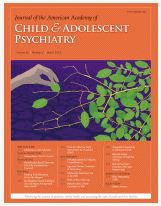It is commonly believed inattentive and hyperactive preschool children will likely “grow out” of these problems later in life. Good data to support this claim, however, are lacking. The Preschool Attention-Deficit/Hyperactivity Disorder Treatment Study (PATS) was one of the most comprehensive studies to date on very young children with ADHD. This recent report on the status of these children at follow-up offers important data regarding the stability of early appearing ADHD symptoms.
Of the 304 original participants in PATS, 207 participated in follow-up. Children had an average age of 4.4 years at baseline and 10.4 years at 6 year follow-up. Children were also assessed 3 and 4 years after baseline, at which point they were being treated in the community. The sample was 75% male. Diagnostic assessments included a comprehensive clinical evaluation, enhanced with the use of both quantitative instruments such as the Conner Rating Scales and a structured diagnostic interview.
Results showed that ADHD symptoms significantly dropped from baseline to the first follow-up 3 years later but leveled off after that. On a relative basis, girls tended to have higher baseline scores and steeper drops in symptoms than boys. At follow up assessments, average ADHD scores continued to be in the moderate to severe clinical range for parent ratings, with a surprising 89% of the sample still meeting criteria for ADHD 6 years later. Medication status was not significantly related to whether or not a child met criteria for ADHD at follow-up. Similar patterns were observed for both inattentive and hyperactive/impulsive symptoms.
Study authors concluded that the diagnosis of ADHD in preschool is fairly stable and associated with chronic symptoms into later childhood, even with treatment. They suggest that the conventional tendency for a more hands-off approach to preschool ADHD may be misguided and, by contrast, early and more intensive treatment may be required, including parent training, school-based behavioral interventions, and more effective medications.
Of note, this article focused on ADHD symptom stability and further reports are expected related to other domains such as cognitive and academic functioning. This sample of children, seen in academic medical centers for ADHD, is likely more symptomatic than children seen in the community which could affect the generalizability of the results. Further, the fact that subjects were no longer randomized at follow-up severely limits firm conclusions about the long term benefits of medications. Nevertheless, the number of symptomatic children overall raises concern that the outlook for typical medication treatment, at least for those with preschool-onset ADHD, is not as positive as generally believed. It is interesting that the authors interpreted this finding as evidence for needing more intensive treatment (under the notion that regular treatment is not enough but could be effective at higher levels) rather than evidence for doing less (under the notion that treatment in this group is not that effective anyway). Obviously, more research will be needed to answer that important question.
Reference
Riddle et al., The preschool ADHD treatment study (PATS) 6-year follow up. (2013) J Am Acad Child Adolesc Psychiatry 52 (3):264-278

